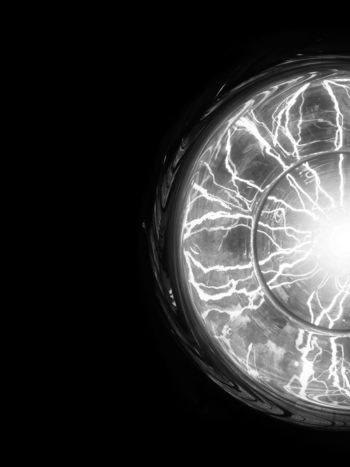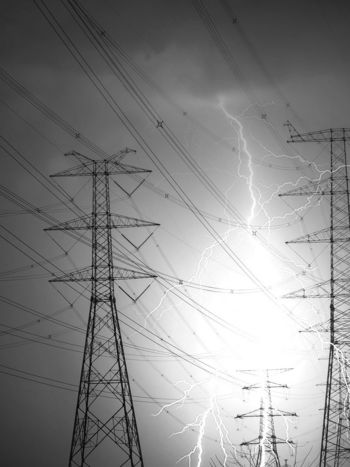Lightning transient sensing, monitoring and application in electric power systems
Lightning faults in transmission lines are randomly distributed throughout the power system. The associated electromagnetic transient characteristics are intricate and hold significant importance for effectively pinpointing lightning faults, as well as identifying fault types crucial for the power system's lightning protection design, operation, and maintenance. This advantage has been evident with the application of protection units or lightning location systems (LLS) over the past decade. However, the rapidly evolving landscape of high-voltage direct current (HVDC) transmission lines and the accelerated integration of renewable energy are contributing to the increasing complexity of modern power networks. These networks now encompass AC transmission, DC transmission, AC-DC hybrid transmission, and more. Protection units are typically installed in substations, capturing transient current signals with lower sampling frequencies. Consequently, grid operators determine the lightning strike point within a few spans by computing the flashover location. In traditional LLS measurement, the indirect measurement of the electromagnetic field and the adoption of the time difference of arrival (TDOA) method are used to retrieve lightning locations. Under these circumstances, accurately identifying fault types becomes challenging, obtaining transient characteristics along transmission lines and substations is elusive, and the precision of lightning surge waveforms requires further enhancement. Furthermore, distribution networks present additional challenges due to the numerous branches and feeders, making lightning transient measurement to be more difficult.
Members
Convenor (CN)
J. L. He
Secretary (CN)
Q. Yang
J. HU (CN), M. KNENICKY (CZ), F. MARIGNETTI (IT), V. MILARDIĆ (CRO), B. FILIPOVIC-GRCIC (HR), K. YAMAMOTO (JP), C.J. ZHUANG (CN), C.M. ZHANG (CN), T.D. DRAGAN (USA), H.G.P. HUNT (ZA), W.H. SIEW (UK), A.K. MOHD ZAINAL ABIDIN BIN (MAS), R.S.J. LØKEN (NO)
Introduction
In recent years, significant strides have been made in broadband-frequency voltage and current sensing and monitoring, largely propelled by the rapid evolution toward smarter grids. This progress owes much to advancements in sensor technology, device manufacturing, and sensor communication networking. The proliferation of low-cost, high-precision voltage and current sensors, along with their monitoring systems, has found extensive application across transmission lines, distribution lines, and substations. These precise distributed measurements furnish critical details concerning lightning faults, encompassing transient voltage and current characteristics like amplitude, frequency, and waveform. They also offer insights into pivotal parameters such as traveling wave velocity, frequency variation, attenuation, dispersion, and distortion throughout the transient process. For the transmission and transformation system, the data gleaned from distributed sensors aids in the effective design of lightning protection equipment and provides vital technical avenues for lightning failure positioning, transient voltage monitoring, fault recognition, and various fault types. The deployment of numerous sensors, often exceeding redundancy, opens avenues for comprehensive coverage. When complemented by machine learning algorithms, the amalgamation of fault and non-fault data gathered by sensor networks enables in-depth analysis, leading to precise fault location determination and a significant reduction in diagnostic errors.
The goal of this working group is to encapsulate the current state of lightning transient sensing and monitoring in power systems. This includes advancements in voltage and current sensor technology, distributed sensor network and communication technology. Additionally, the group aims to explore the practical application of these sensor networks in lightning location, fault identification, and intrusion transient analysis.
Scope
- Provide an overview of the developmental stages of advanced lightning transient voltage and current sensors in power systems. This encompasses sensors such as coupling capacitive voltage sensors, those based on piezoelectric and electro-optic effects for voltage measurement, as well as current sensors utilizing low-cost Rogowski coils, magneto-resistive and magneto-optic effects.
- Provide an overview of the latest advancements in sensor miniaturization technology, calibration techniques, synchronization of sensing times, wireless communication systems, and low-power supply technology. Additionally, delve into the fundamental principles involved in constructing a cost-effective distributed sensor network designed specifically for monitoring lightning transient voltage and current.
- Examine transient voltage and current caused by lightning in HVAC transmission lines, substations, HVDC transmission lines, and converter stations. Utilize big data mining technology to analyze distributed networks and explore the distinctive characteristics and fingerprint information associated with lightning transients along the entire path from transmission lines to substations.
- Examine the utilization of a distributed sensing and monitoring network in lightning fault location, fault-type identification, and the detection of transient intrusions. Furthermore, assess the prospective application of this technology in the design and evaluation of lightning protection for HVAC, HVDC transmission, and distribution networks.
This Technical Brochure elucidates advanced lightning transient voltage/current sensing technology, sensor application techniques, sensor data mining and analysis methods, and the fundamental applications of distributed sensing systems in power systems. These insights aim to offer robust support for the implementation, as well as the ongoing development and enhancement, of smart grids or intelligent grids.
Conclusions
This Technical Brochure comprehensively summarizes the fundamental principles, advantages, disadvantages, and application scenarios of Voltage/Current sensors in power systems. It covers contact voltage sensors, such as resistive-capacitive voltage dividers and casing-end screens, and non-contact electric field sensors based on principles like coupled capacitance, charge induction, piezoelectric effect, and electro-optical effect. Additionally, low-cost Roche coils, B-dot magnetic field sensors, and magnetic field sensors based on the Hall effect, magnetoresistive effect, and magneto-optical effect are discussed. The Technical Brochure also provides an overview of recent advances in sensor miniaturization techniques, sensing time synchronization, wireless communication systems, energy supply techniques, and calibration for measurements in sensing monitoring devices. Data mining techniques are introduced, discussed, and analysed concerning their application in power systems. Finally, the Technical Brochure explores the application of distributed sensing and monitoring networks in new energy systems, lightning strike identification and localization, and fault analysis.




